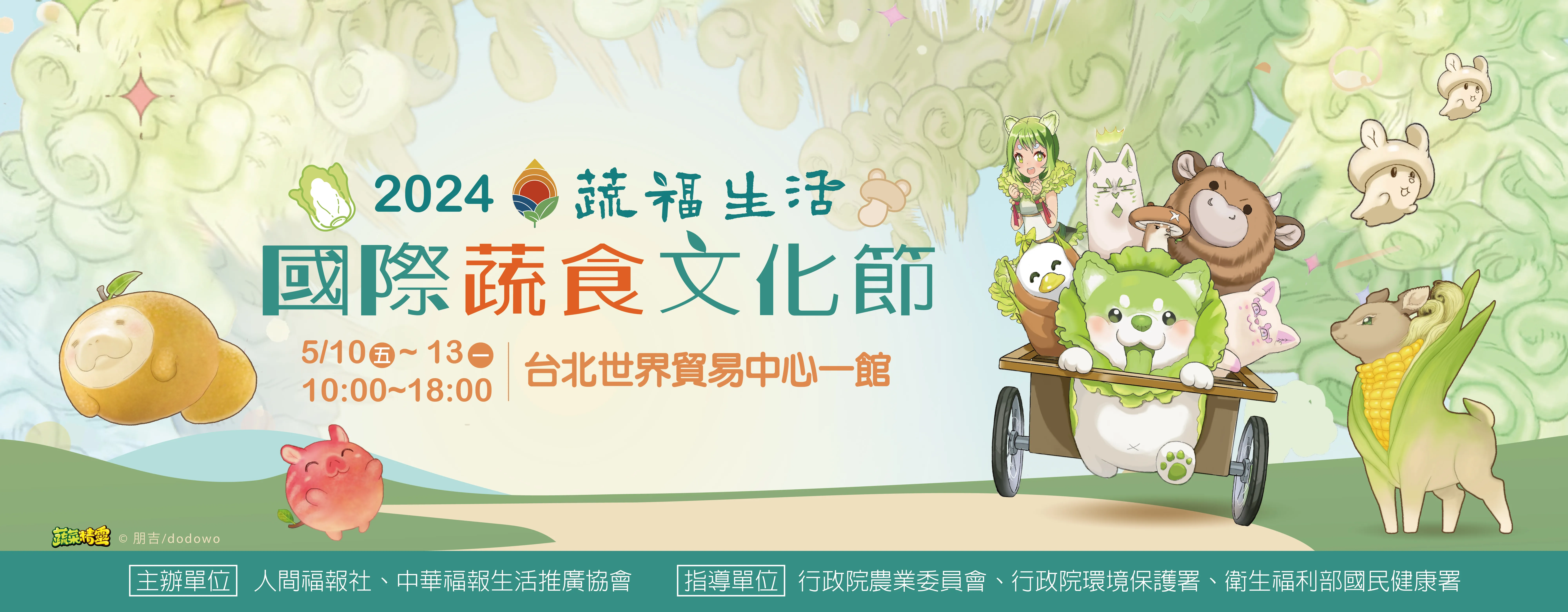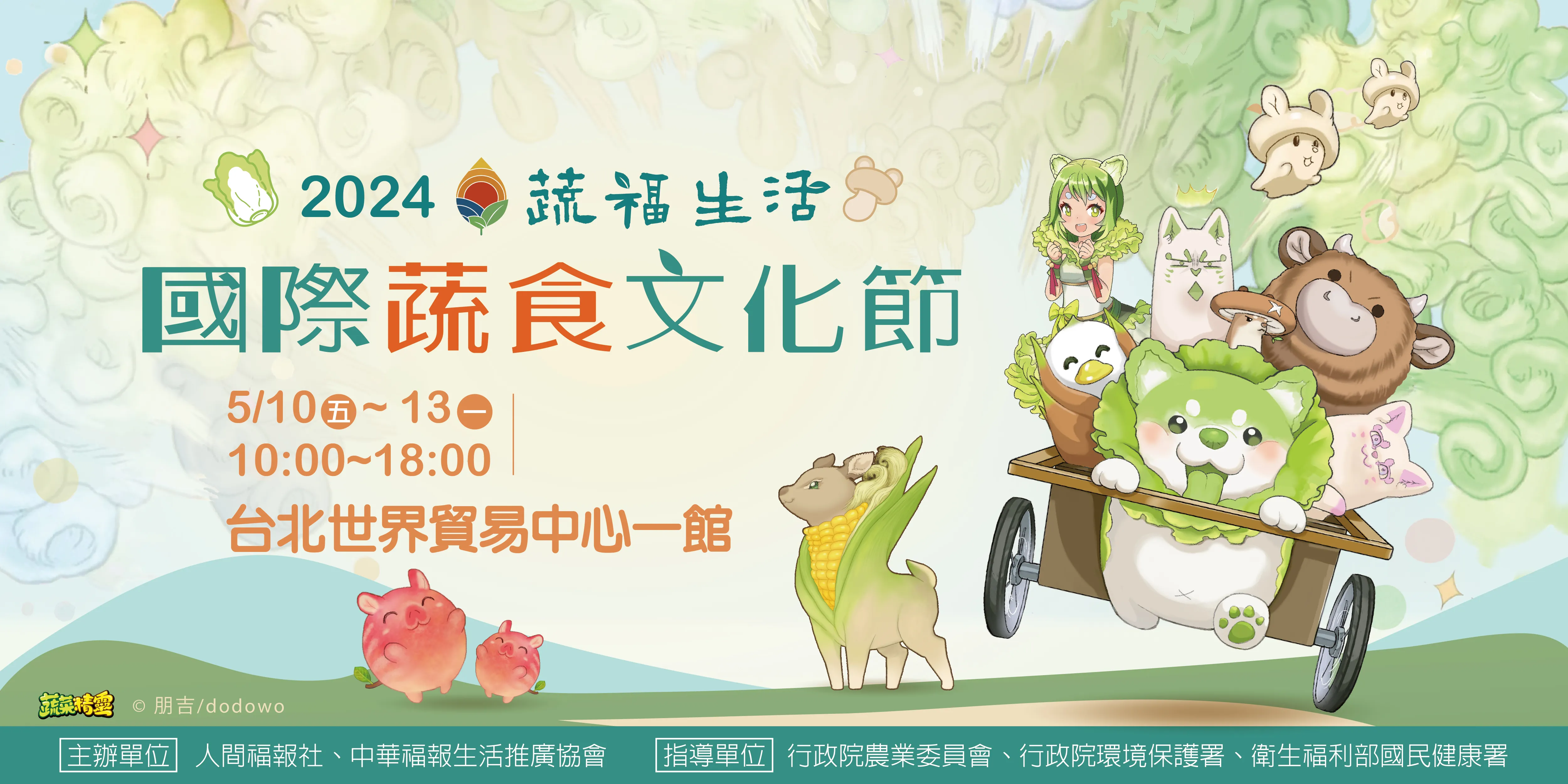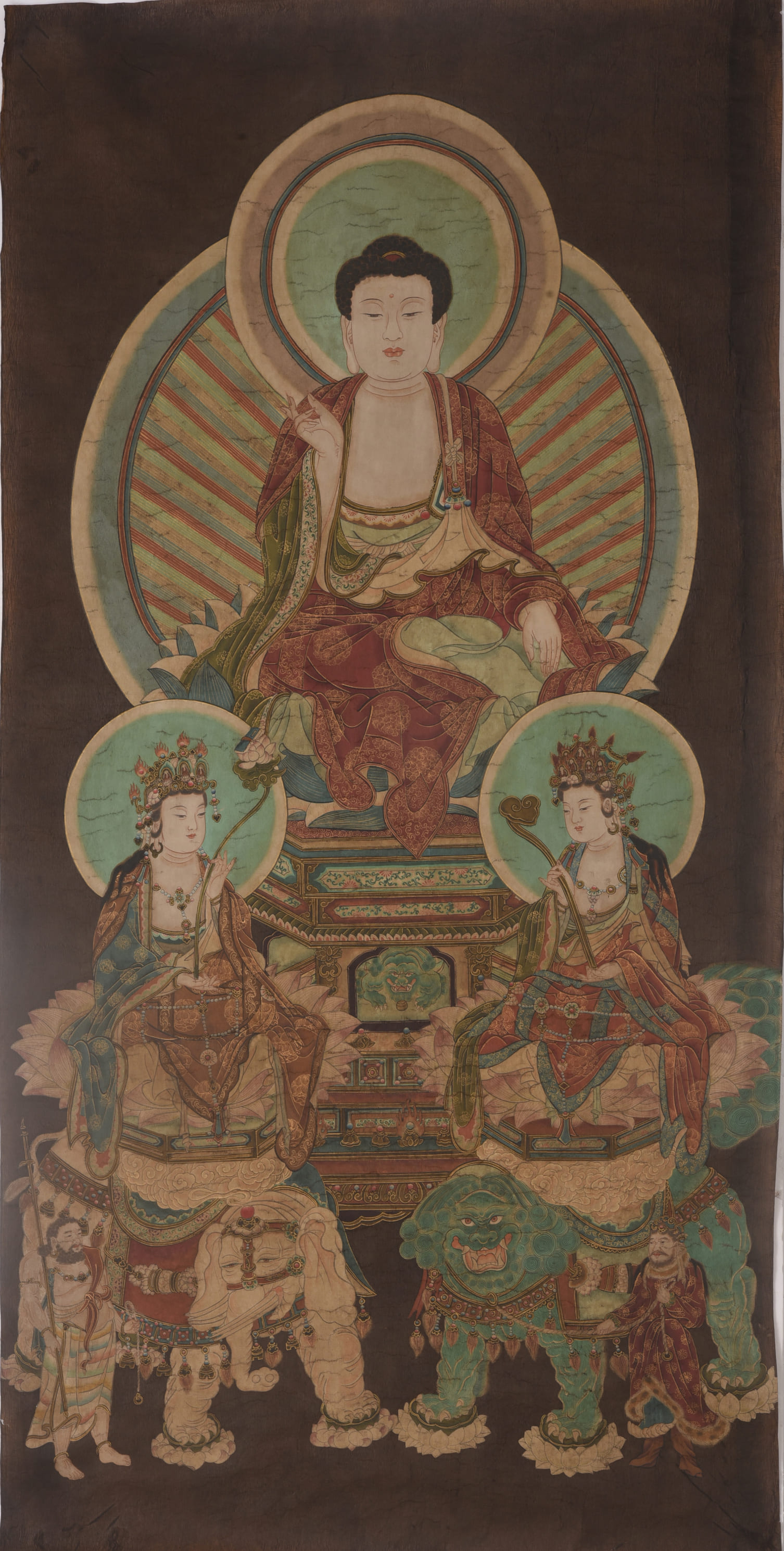


| 時代: | 明朝中後期 (西元1572-1644年) |
| 出土地點: | 傳世品 |
| 尺寸: | 長度:約171 cm 寬度:約85 cm |
| 質地: | 工筆礦物彩布質壁畫 |
| 數量: | 1 |
此件是明朝中後期華嚴三聖圖,此幅壁畫使用藏畫法,也叫喇嘛水陸道場畫法。顏料是用標準明朝中後期的天然礦物彩料,呈色依然鮮豔,但有明顯年代久遠風化現象。畫風是繼承宋朝融合南、北特色之畫院畫法,兼容明朝皇室信仰藏傳佛教,偏好繁複華麗、布局廣面之宮廷畫風,畫工繁複細緻,與法海寺內壁畫之畫工如出一轍,華嚴三聖神態姿勢、衣著紋飾,以及捲雲畫法,整體畫風、畫法和布局方式雷同。
This artwork is a mid-to-late Ming Dynasty depiction of the "Three Saints of Huayan" using the "hidden painting" technique, also known as the "lama water-land dojo" painting method. The pigments employed are standard natural mineral pigments from the mid-to-late Ming Dynasty. The colors remain vivid, though they exhibit noticeable signs of age and weathering. The artistic style integrates the Southern and Northern characteristics of Song Dynasty court painting and is in line with Ming Dynasty imperial devotion to Tibetan Buddhism. This painting demonstrates a preference for ornate and elaborate court aesthetics, encompassing intricate details and expansive compositions. The intricate detailing of the artwork is reminiscent of the paintings within the Fahai Temple. The depictions of the Three Saints of Huayan—their postures, attire, adornments, and the swirling cloud painting method—are strikingly similar in style, technique, and composition.
此幅畫主體為華嚴三聖,中央為釋迦牟尼佛,釋迦牟尼佛眼瞼低垂呈思考狀,眉心中央有白毫,頭部比例較大,身形沉穩端正,上半身面積較大,著有披肩式的紅色僧衣,衣著蔽體不露,在寬大袖口自手肘才大幅散開,胸口交領低而寬,露出裙頭的結飾,衣著有描金捲葉團紋等紋飾,右手向上、拇指與中指相捻,持說法印,左手向下、掌心向內持降魔印,雙腿盤坐於藍色蓮座上,蓮座安於繁複華麗的亞字形座上。
The central focus of the painting is on the Three Saints of Huayan. At the center is Shakyamuni Buddha. His eyes are cast downwards in contemplation, and there is a white tuft of hair between his eyebrows. His head is proportionally large, and his stance is dignified and composed. The upper body is emphasized, wearing a red monastic robe draped over one shoulder. The robe conceals the body, with large, open sleeves extending from the elbows and a wide, low V-neck exposing a decorative skirt. The robe is adorned with gold-outlined rolling leaf patterns. His right hand is raised, with his thumb touching his middle finger, forming the Dharmachakra Mudra (Wheel Turning Gesture), while his left hand is lowered, forming the Varada Mudra (Gesture of Generosity), palm facing inward. He is seated in a meditative posture on a blue lotus throne, nested within an intricately designed Asiatic character-shaped platform.
釋迦牟尼佛兩側是文殊菩薩與普賢菩薩,普賢菩薩左手持說法印銜蓮花、蓮花上有經書,右手掌心向上托蓮花,文殊菩薩右手持說法印銜如意,左手掌心向上托如意,文殊與普賢菩薩皆安座於粉色蓮花座上,蓮花座和坐騎白象、獅子中央有祥雲,白象和獅子身上的鞍皆繁複華麗,側邊有牽引坐騎之侍者,四足各踩一個蓮座。
Flanking Shakyamuni Buddha are Manjushri Bodhisattva and Samantabhadra Bodhisattva. Samantabhadra holds a lotus flower with a scripture resting on it in his left hand and raises his right hand, palm up, supporting another lotus flower. Manjushri holds a lotus flower in his left hand and a symbolic sword in his right, both raised in the Dharmachakra Mudra. Both Bodhisattvas are seated on pink lotus thrones, and their seats, along with their respective mounts—an elephant for Samantabhadra and a lion for Manjushri—are surrounded by auspicious clouds. These mounts' saddles are exquisitely ornate. Adjacent to them are attendants leading their mounts, each foot of the mounts stepping on a lotus seat.
